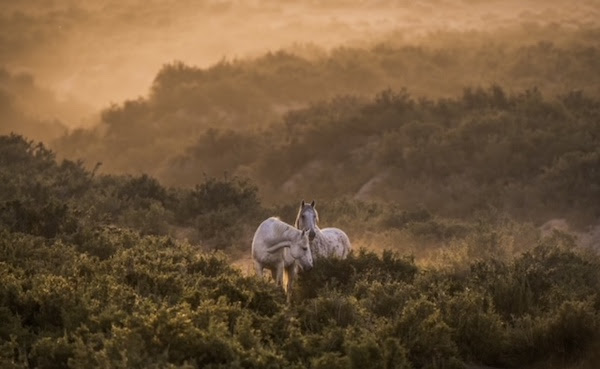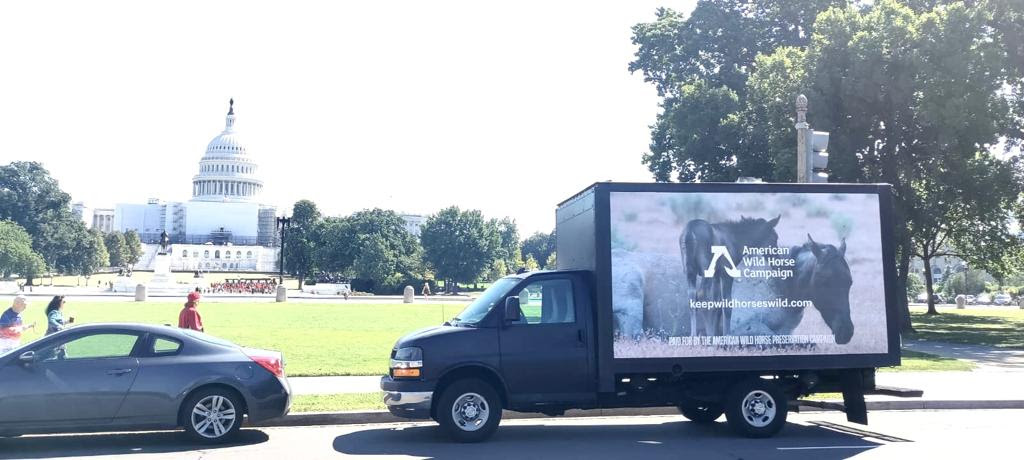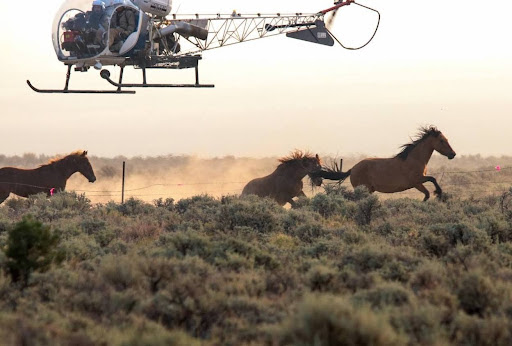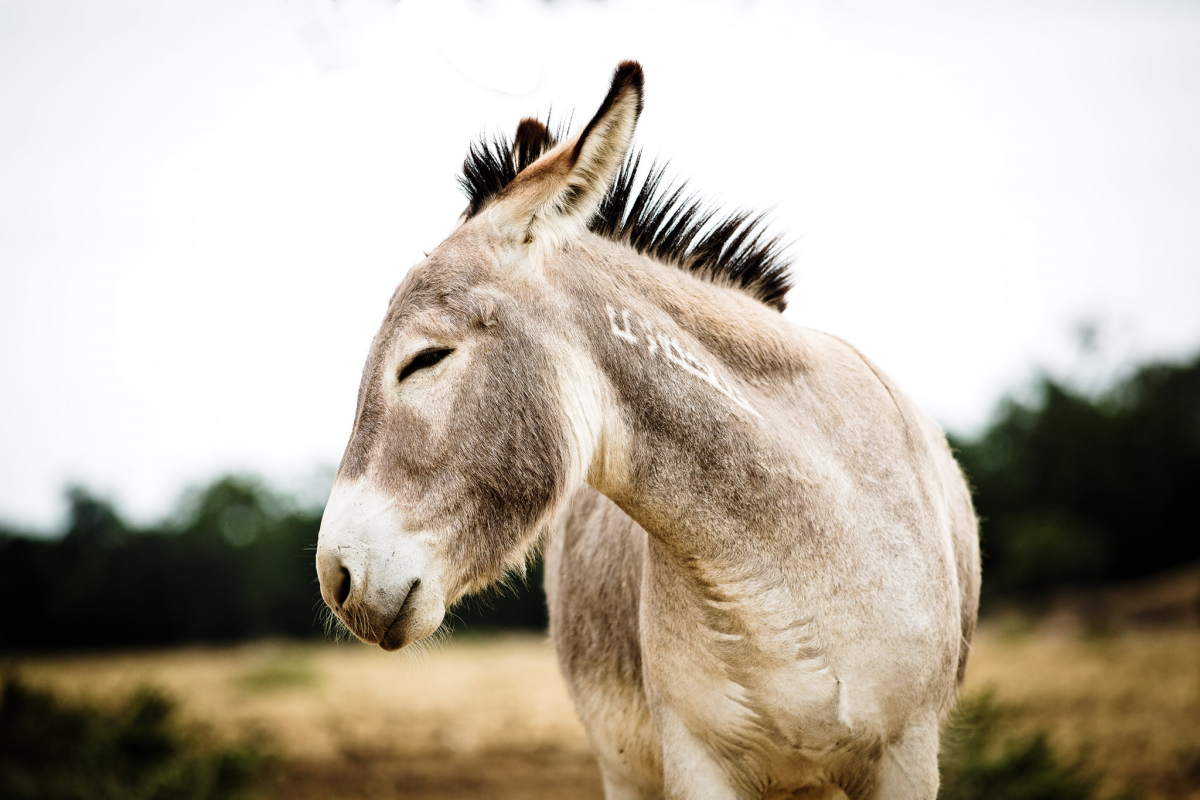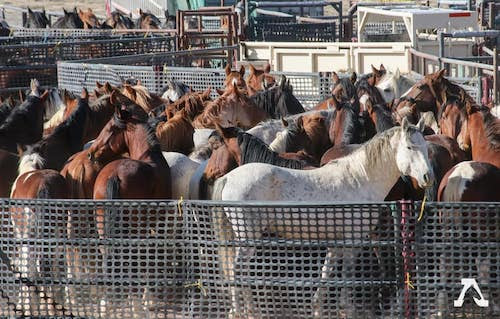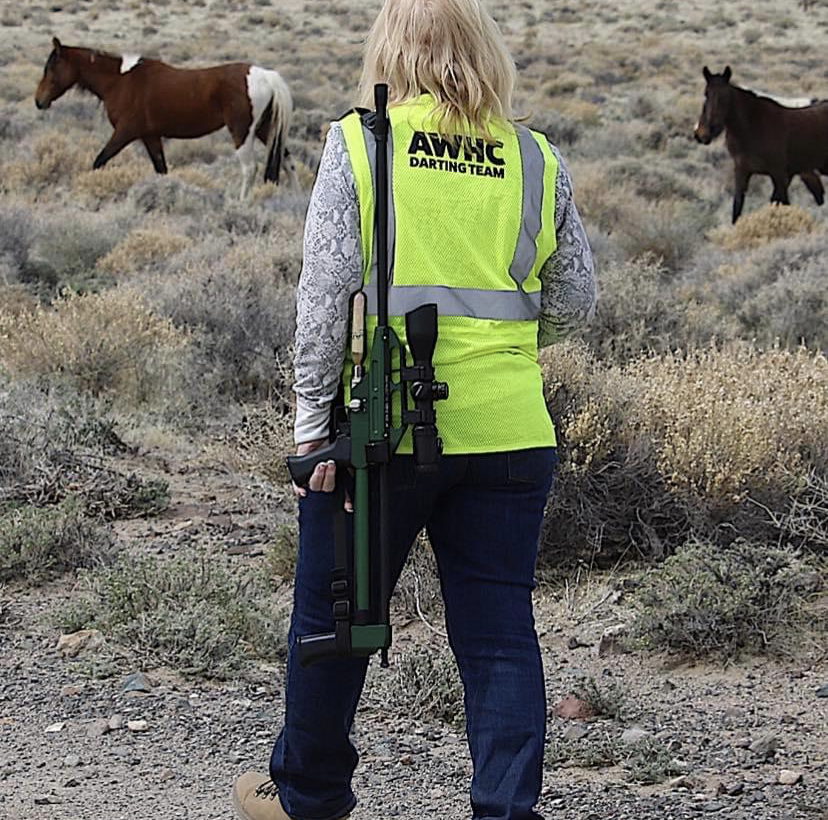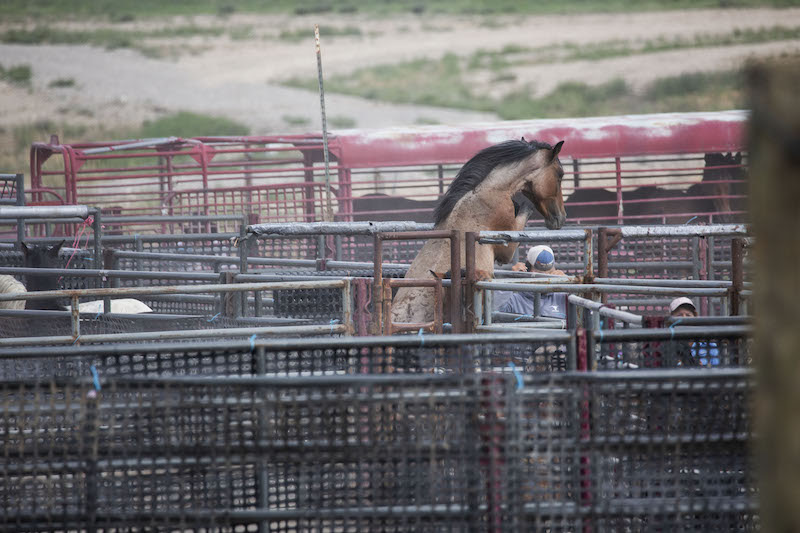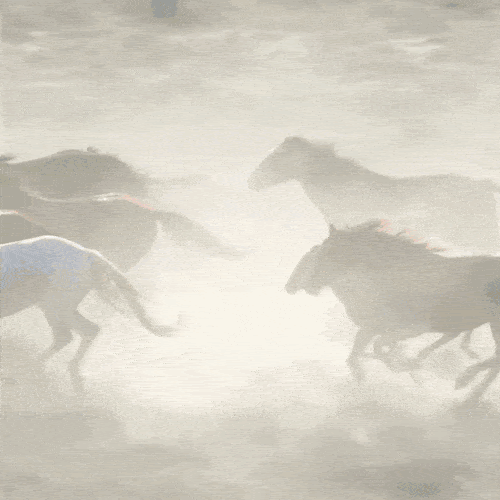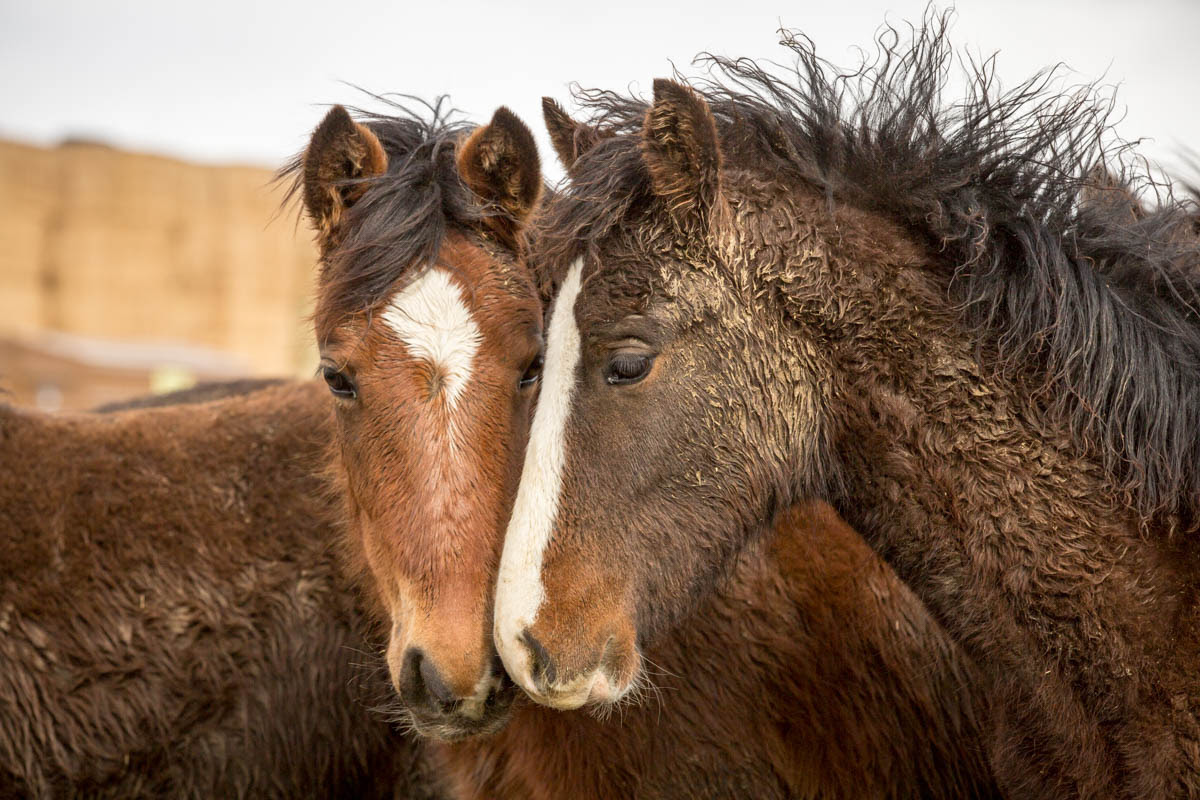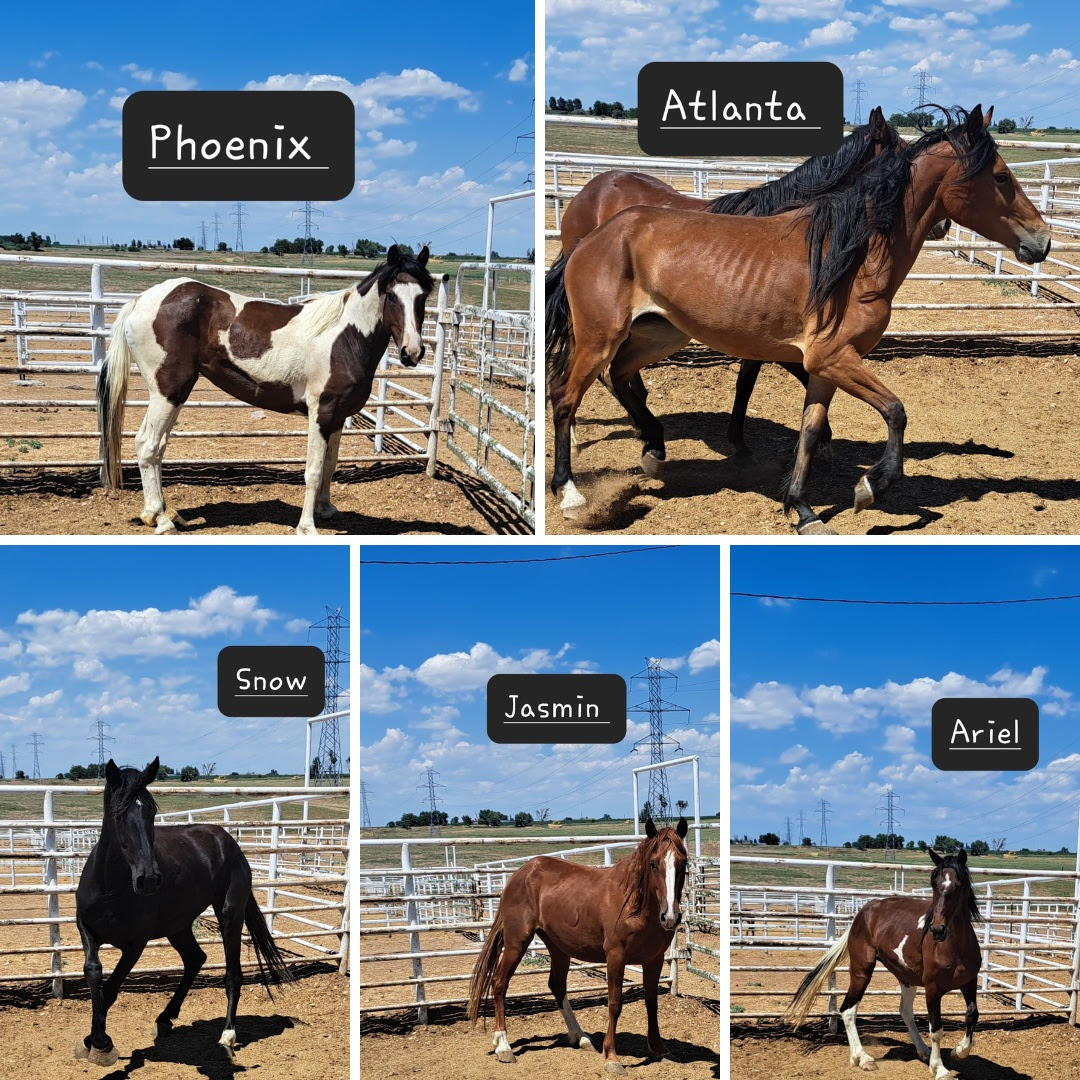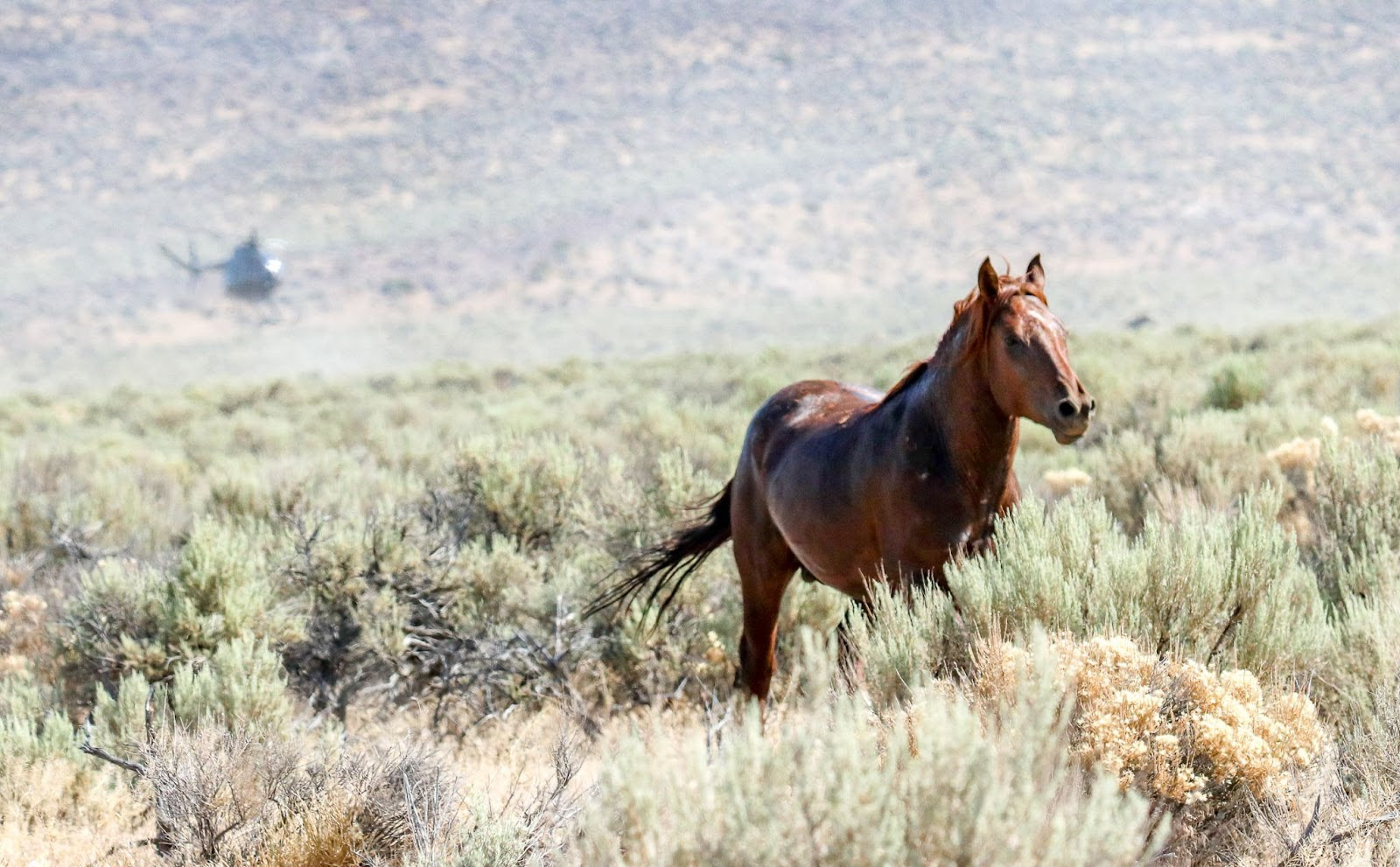
The following is from the American Wild Horse Campaign:
Our mission is simple: We will not stop working until our cherished wild horses and burros can live out their lives in the wild where they belong.
So far, during this 2022 summer roundup season, the Bureau of Land Management (BLM) has already removed a devastating 6,000 wild horses and burros from their homes on public lands. As we write this, 3 separate helicopter roundup operations continue on — more than we have ever seen happen simultaneously in our organization’s history.
Thousands of innocent wild mustangs and foals are set to lose their freedom forever, only to be confined to the BLM’s holding facilities — facilities that earlier this year were stricken with deadly viruses and disease outbreaks. Perhaps worse, many of these innocent animals will likely be adopted through the BLM’s Adoption Incentive Program (AIP) — a program that has proven to be a slaughter pipeline for far too many wild horses and burros.
We will not sit by and accept this fate for our cherished wild herds. We are working day in and day out in the field, in court, and on Capitol Hill in Washington, D.C. to protect the lives and freedom of wild horses and burros. Today, we wanted to share with you what we’re doing right now to protect these innocent animals, but first, will you consider making a donation to power our work?
In the Field
We are not just demanding change, we’re proving that a better way is possible. For more than 3 years, AWHC’s highly successful fertility control program on the Virginia Range in Nevada has reduced the foaling rate in this historic mustang herd by over 63% — all without the removal of a single horse. The program is proving that humane fertility control is a viable alternative to costly and cruel helicopter roundups and removals — and our success on the Virginia Range is prompting the expansion of our fertility control programs to herds in other areas of Nevada and Utah, all in the name of keeping wild horses in the wild where they belong.
Meanwhile, we also launched a roundup observation program this year and are deploying informed photographers and advocates to as many helicopter roundups as possible so that the public knows what is happening to our wild horses and burros in these remote areas of the West. We also hold the BLM accountable for the animal welfare violations our observers see, such as chasing horses in extreme temperatures, for long distances, and in a manner that causes foals to be left behind, as well as capturing too many horses at once in small pens, resulting in traumatic injuries such as broken legs.
Our field work is building a powerful case for change that’s being noticed at the highest levels of Congress and the Department of the Interior (DOI).
In Court
Our legal team works around the clock to defend wild horses and burros from government actions that violate federal laws and harm these cherished animals. Right now, we are in court against the DOI and BLM to stop the disastrous AIP from proceeding in its current form, with the ultimate goal of eliminating the cash incentives, which have resulted in droves of mustangs and burros ending up in the slaughter pipeline.
When not litigating, our legal team is busy strategically evaluating every option available to further legal protections for wild horses and burros. We’re gearing up for a legal fight in Wyoming, as the BLM seeks to eradicate entire herds of the state’s wild horses they are charged with protecting and we have 11 active Freedom of Information Act lawsuits requesting BLM government records they have failed to hand over time and again.
On Capitol Hill
Our Government Relations team works in collaboration with other advocacy groups and members of Congress to ensure further legislative protections for wild horses and burros. Right now, our team is working to secure language in the Fiscal Year 2023 Appropriations bill that would better protect wild horses and burros and encourage humane, on-range management strategies. The language includes allocating $11 million of the BLM’s budget away from roundups and towards the implementation of humane, reversible fertility control programs to manage wild horses and burros in the wild, while also urging the BLM to utilize public-private partnerships with veterans and the wild horse community to implement fertility control. We’re also securing language to address the AIP and protect horses adopted through the Forest Service.
We also continue to work with Congress to pass other necessary horse and burro protections, including the Wild Horse and Burro Protection Act (H.R. 6635), which would ban the use of helicopters, the Ejiao Act (H.R. 5203), to combat the brutal trade of donkey hides, and the SAFE Act (H.R. 3355 / S. 2732), which would ban the transport of horses and burros out of the country for slaughter and keep slaughter plants closed in the U.S.
But it’s not just our Government Relations team who is putting in the work! Part of our legislative fight is mobilizing AWHC’s grassroots army to contact the BLM, Forest Service, and Congress when wild horses and burros need help the most. It is because of your support that we are able to achieve significant wins, like an early end to the Piceance Basin roundup earlier this month.
There is so much at stake for wild horses and burros. That’s why we’re fighting back in every way possible to protect the rights and lives of these cherished animals. Can you make a donation right now to help us continue our fight in the field, in courts, and on Capitol Hill to protect wild horses and burros?
Thanks for your help,
American Wild Horse Campaign
